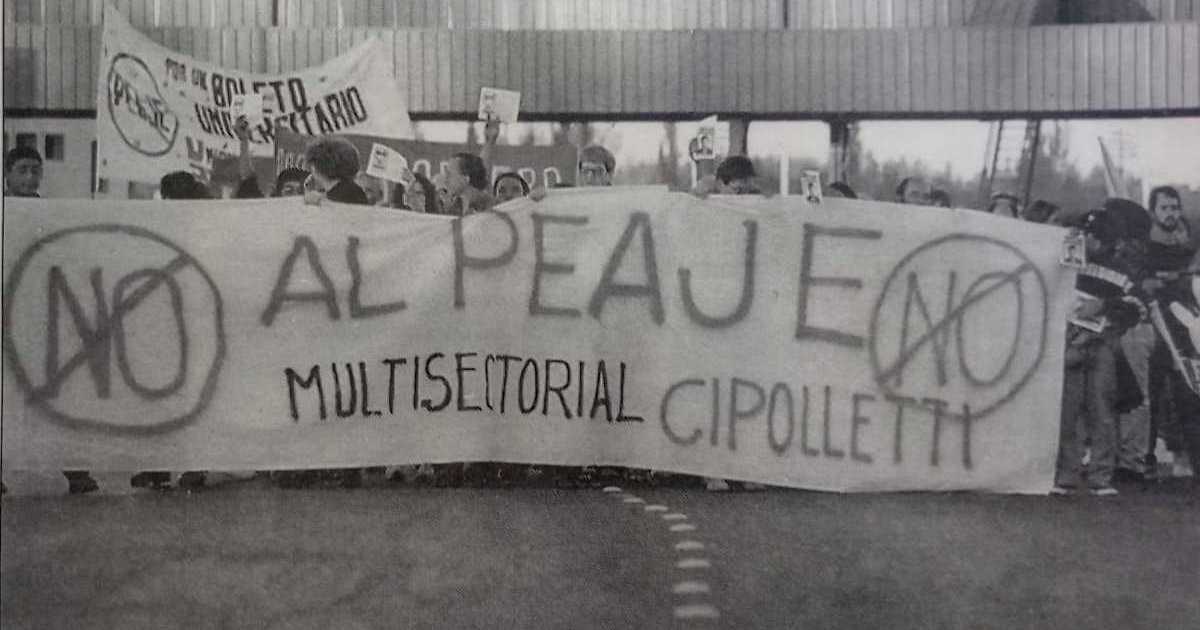When The only way to cross the Neuquén River was on a precarious raftSurely those neighbors who were beginning to organize the towns on each shore never thought that a communication route could be the cause of so many disputes. Today, 87 years later of that February 20, 1937, we can say that “too much water has passed” under those bridges and that The primitive need to unite two provinces became just a part of the life of that sector, where the journey of so many companies, families, workers and governments flows, with all the processes, crises and tensions that this entails. The transformation that was applied to it was surrounded by controversy and since the struggles began to become visible in the street, it is the point where all claims seek to be taken into account.
Almost 60 years after that emblematic inauguration promoted by the governor of Neuquén Carlos H. Rodriguez, things began to register attempts to change. The demographic explosion, added to the growth of the vehicle fleet, were some of the arguments that the government used to convert the railway crossing into an “Interurban Road System” (Collectora 29), whose construction was awarded by President Carlos Menem to the group of national companies that made up “Caminos del Valle” (Decree 427 of March 27, 1995). From there the idea of a second bridge and surrounding works was born, which was going to require an investment of 14 million pesos.
The proposal that RÃ O NEGRO replicated had been left behind in time. in its pages of the June 1993 publication, when the engineer Juan Luis Gardes assured that an expansion of the historic crossing could solve the problem, without the costs of new construction, right from the start. Taking advantage of the available structure, the professional thought add new lanes, three meters each on both sides, through the assembly of prefabricated and prestressed beams and slabs, without interrupting normal circulation, for approximately $2,470,000, without taking into account the price of conditioning the accesses. But the efforts took another direction and the offer by the consortium of the firms Contreras, Burgwardt, Esuco, Kank and Costilla became a reality (UTE, the Transitional Union of Companies).
Three milestones in history from left to right: the railway, the 2nd Bridge and the historic Bridge. Photo on the Contreras firm website.
***
If the completion of Route 22 has come with obstacles and non-compliance for 140 years, the case of these bridges was no exception either, with debates between the contractors, National Highways and the municipalities. Julio Arriaga was the mayor of Cipoleño, with Alberto Weretilneck as Secretary of Government, while Luis Jalil was the Neuquén communal chief. But the trigger that added a different chapter to this story was the announcement oftoll collection, 65 cents onwards (high price in those years) that harmed thousands of drivers who crossed there every day, not once, but several times.
The measure triggered the creation of a Multisectoral on each side of the river, made up of different sectors. On Friday, February 21, 1997exactly 27 years ago, took place the first demonstrationwith Oscar Ragni of the “Current of Militants for Human Rights” at the head, reading a document prepared together. The UTE’s response was a document letter to the groups, holding them responsible for possible damage to “our work”, “our property and that of the National State”.
The memory of the cabins, from the air. Photo on the Contreras firm website.
***
For years, those neighbors defended the rejection to “pay for driving without alternative roads†with protections and even a gathering of 20 thousand signatureseven accusing companies of illicit enrichment. They were only able to celebrate 16 years laterwhen the already known “Caminos del Valle†ended its concession in April 2013 and no one doubted the promises of work that it never fulfilled.. The same ones who claimed to be raising money to solve “historical” needs. “It was at 10:55 on April 30 when the employees who were in charge of collecting payments left their jobs and raised the barriers forever,†the Archive of this medium recalled. Five summers later, too for February, but in 2018, the fight booths would be forgotten.
Once this stage is over, a new one would come: that of the Third Bridge and the indecision surrounding its location, whether in “Rincón de Emilio” or “Cañadón de las Cabras”… The story continued, with different authorities and contexts, but repeating the same cycles.
